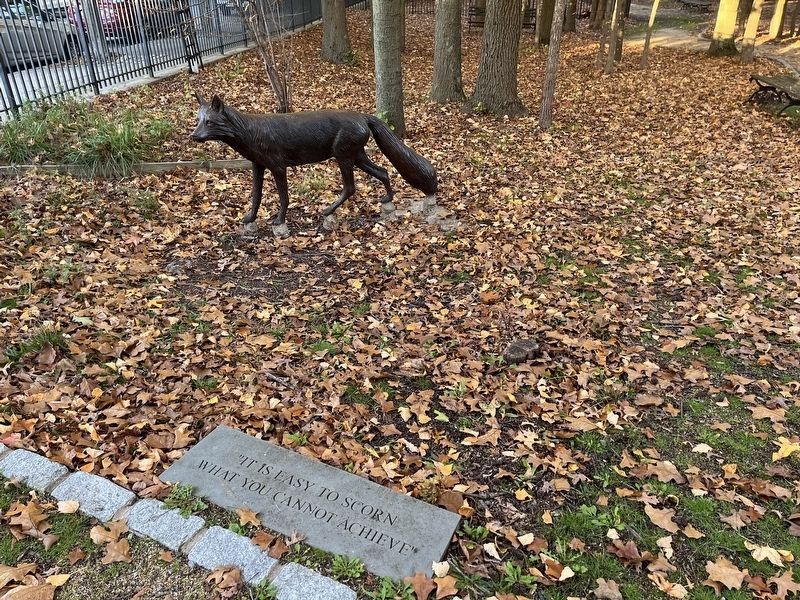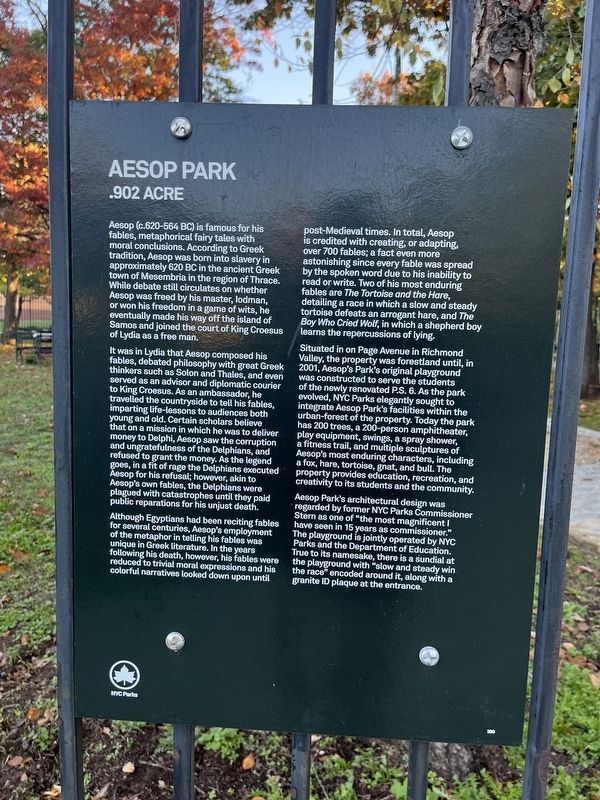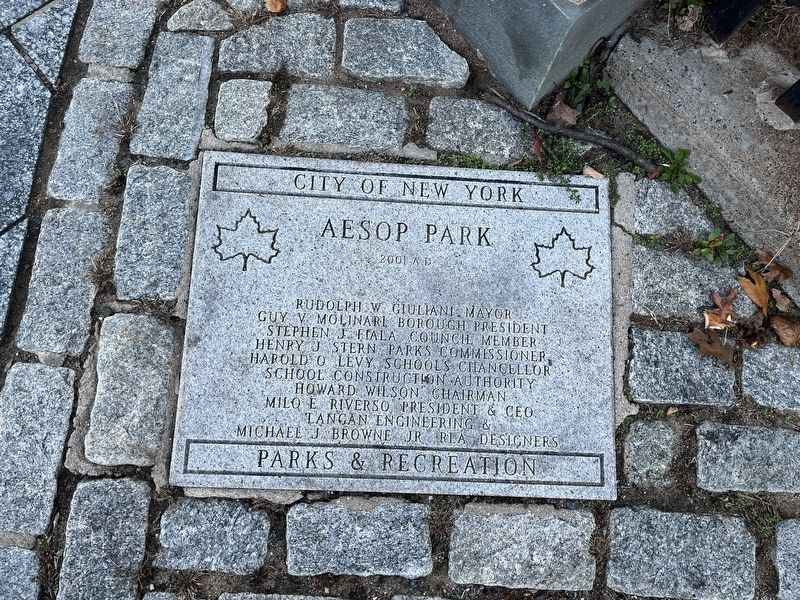Tottenville on Staten Island in Richmond County, New York — The American Northeast (Mid-Atlantic)
Aesop Park
.902 Acre
Aesop (c. 620 - 564 BC) is famous for his fables, metaphorical fairy tales with moral conclusions. According to Greek tradition, Aesop was born into slavery in approximately 620 BC in the ancient Greek town of Mesembria in the region of Thrace. While debate still circulates on whether Aesop was freed by his master, Iodman, or won his freedom in a game of wits, he eventually made his way off the island of Samos and joined the court of King Croesus of Lydia as a free man.
It was in Lydia that Aesop composed his fables, debated philosophy with great Greek thinkers such as Solon and Thales, and even served as an advisor and diplomatic courier to King Croesus. As an ambassador, he travelled to the countryside to tell his fables, imparting life-lessons to audiences both young and old. Certain scholars believe that on a mission in which he was to deliver money to Delphi, Aesop saw the corruption and ungratefulness of the Delphians, and refused to grant the money. As the legend goes, in a fit of rage the Delphians executed Aesop for his refusal; however, akin to Aesop's own fables, the Delphians were plagued with catastrophes until they paid public reparations for his unjust death.
Although Egyptians had been reciting fables for several centuries, Aesop's employment of the metaphor in telling his fables was unique in Greek literature. In the years following his death, however, his fables were reduced to trivial moral expressions and his colorful narratives looked down upon until post-Medieval times. In total, Aesop is credited with creating, or adapting, over 700 fables; a fact even more astonishing since every fable was spread by the spoken word due to his inability to read or write. Two of his most enduring fables are The Tortoise and the Hare, detailing a race in which a slow and steady tortoise defeats an arrogant hare, and The Boy Who Cried Wolf, in which a shepherd boy learns the repercussions of lying.
Situated on Page Avenue in Richmond Valley, the property was forestland until, in 2001, Aesop's Park's original playground was constructed to serve the students of the newly renovated P.S. 6. As the park evolved, NYC Parks elegantly sought to integrate Aesop Park's facilities within the urban-forest of the property. Today the park has 200 trees, a 200-person amphitheater, play equipment, swings, a spray shower, a fitness trail, and multiple sculptures of Aesop's most enduring characters, including a fox, hare, tortoise, gnat, and bull. The property provides education, recreation, and creativity to its students and the community.
Aesop Park's architectural design was regarded by former NYC Parks Commissioner Stern as one of "the most magnificent I
Erected 2017 by NYC Parks.
Topics and series. This historical marker is listed in these topic lists: Arts, Letters, Music • Education • Parks & Recreational Areas. In addition, it is included in the NYC Parks series list. A significant historical year for this entry is 2001.
Location. 40° 30.561′ N, 74° 13.828′ W. Marker is on Staten Island, New York, in Richmond County. It is in Tottenville. Marker is at the intersection of Page Avenue and Bartow Avenue, on the right when traveling north on Page Avenue. Touch for map. Marker is at or near this postal address: 10 Page Ave, Staten Island NY 10307, United States of America. Touch for directions.
Other nearby markers. At least 8 other markers are within walking distance of this marker. Tottenville (about 500 feet away, measured in a direct line); Staten Island Civil War Memorial (approx. half a mile away); Joseph W. Palmer (approx. half a mile away); CYO Memorial Tree (approx. half a mile away); Father John C. Drumgoole (approx. half a mile away); Rev. John C. Drumgoole. (approx.

Photographed By Devry Becker Jones (CC0), October 29, 2022
4. Fox sculpture on the grounds
The plaque reads:
"It is easy to scorn what you cannot achieve"
Credits. This page was last revised on July 11, 2023. It was originally submitted on October 31, 2022, by Devry Becker Jones of Washington, District of Columbia. This page has been viewed 101 times since then and 22 times this year. Photos: 1, 2, 3, 4. submitted on October 31, 2022, by Devry Becker Jones of Washington, District of Columbia.
Editor’s want-list for this marker. A wide shot of the marker in context. • Can you help?


